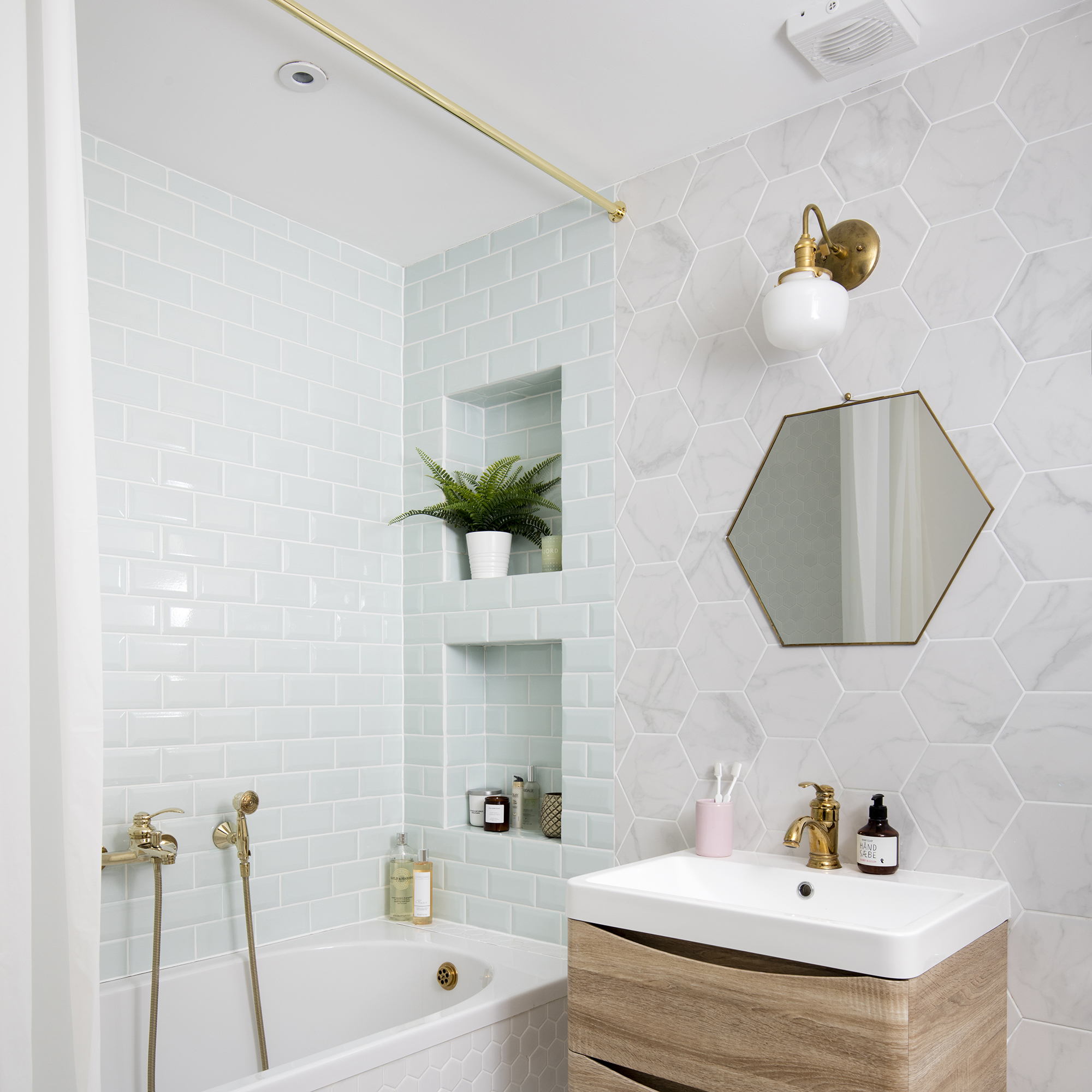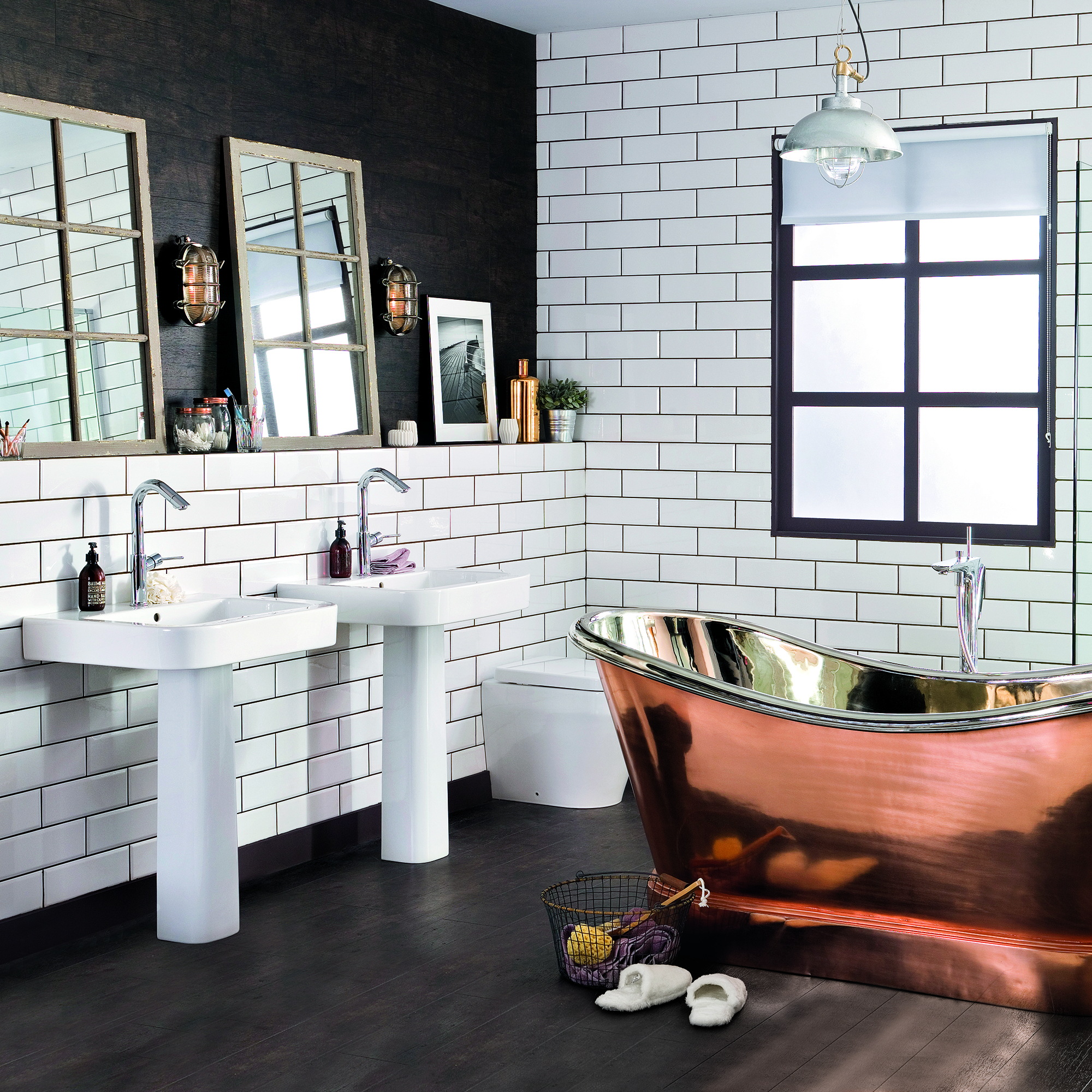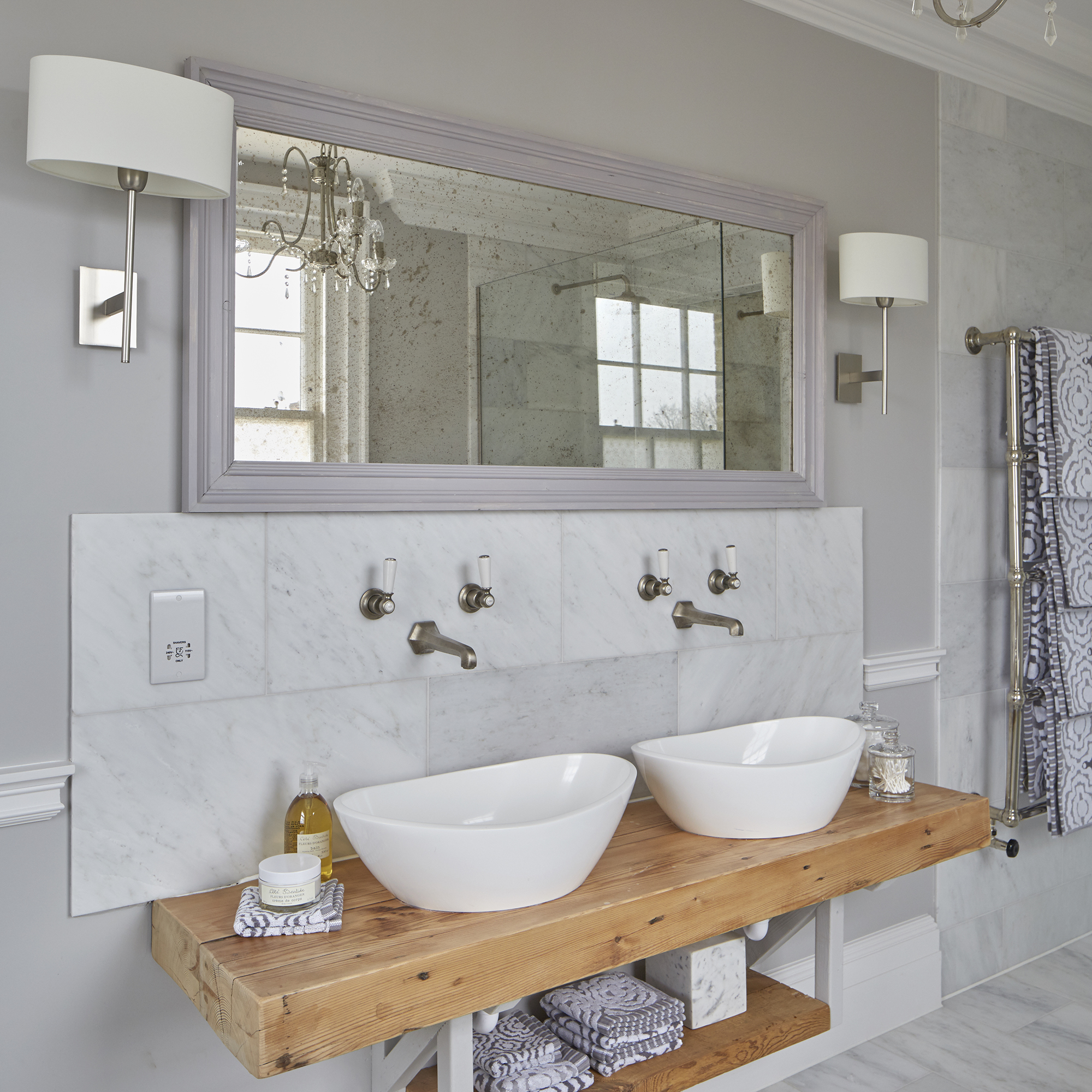IP ratings explained – everything you need to know
Understand your bathroom's electrical zones and make safety a priority when choosing fittings

Looking for bathroom lighting ideas to change up your bathing space? You need to know your stuff when it comes to IP ratings explained. It's all about the importance of bathroom electrical zones, so you can be sure that the lighting and fixtures you plan to use comply with safety regulations.
You may have your heart set on a bathroom pendant or bathroom wall lights but these bathroom lighting idea aren't as appealing if they turn out to be dangerous! Jo Plant, head of design at Pooky says, ‘Personal taste and stylistic flourishes aside, the main thing to consider in a bathroom is always safety.’ That’s where the IP rating system comes in. It’s a guide to help you make sure that safety doesn’t become a matter of guesswork.
We’ll guide you through what the different bathroom electrical zones are, what IP ratings are and how they relate to bathroom electrical safety.
What is the IP rating chart?

Bathrooms by their nature are rooms that are going to get wet and where moisture is likely to be an issue. As everyone knows, exposing electrics to moisture is something that should be avoided, unless they’re designed to withstand it. There's a system in place to make sure lighting and electrics are installed safely in such an environment. So, for IP ratings explained, lights and electrics are given an IP rating.
IP stands for ‘Ingress Protection’. Giuseppe Capanna, Product Safety Engineer at Electrical Safety First explains ‘An IP rating is a number applied to appliances or installation products relating to their level of protection against the ingress of water and or solid foreign objects.’
A standard IP rating is made up of two numbers. The first character, between 0-6, relates to the level of protection against solid foreign objects, like dust. The second number, between 0-9, tells you how much protection is offered against contact with moisture.
It can seem confusing, but once you have had IP ratings explained, it’s pretty self-explanatory. Put simply by Jo Plant, Head of Design at Pooky: ’The higher the number, the more resistant it is.’
Get the Ideal Home Newsletter
Sign up to our newsletter for style and decor inspiration, house makeovers, project advice and more.
What are the different zones in a bathroom?

Of course, not everywhere in a bathroom is exposed to the same amount water and moisture. Some places, like inside the shower or beside the bath are likely to get wet all the time. Other areas – such as above the sink – may only get occasional condensation. When explaining IP ratings, there are places in a bathroom where there will be very little or no contact with moisture at all. To reflect these differences, bathrooms are split into different IP zones.
ZONE 0
This covers the space inside a shower cubicle or basin or within a bath itself. In this area, any light fitting is likely to come into contact with or be submerged in water. Any fitting used in this bathroom zone must be low voltage (max 12V) and be rated at least IP67 which means it's immersion proof.
‘Mains powered, that is. 240V products, should never be used in zone 0,’ explains Giuseppe from Electrical Safety First. ‘They are likely to be submerged and there is a much greater risk of electrocution.’
ZONE 1
This covers the walls in and above a shower, or the wall next to a bath. While these areas might not be submerged to the same degree as inside a bathtub or shower basin, they may still be exposed to significant amounts of water splashes and condensation.
ZONE 2
An area stretching out 60cm from a sink, bath or shower enclosure, as well as any area within 60cm of a washbasin or tap. This area covers places where there might be lighter or very occasional splashes or spraying of water.
ZONE 3
These are also known as ‘outside zones’. They cover any area that is not in contact with collecting water or exposed to water jets.
| ZONE | Minimum rating required | What it covers |
| Zone 0 | IPX7 | Space inside a shower cubicle or basin or within a bath itself. Any fitting likely to come into contact with, or be submerged in water |
| Zone 1 | IPX4 (IPX5 if water jets) | Walls in and above a shower or the wall next to a bath |
| Zone 2 | IPX4 (IPX5 if water jets) | An area 60cm around a sink, bath or shower enclosure, as well as any area within 60cm of a washbasin or tap |
| Zone 3 (Outside zones) | IPXXB or IP2X | Any area not in contact with collecting water or exposed to water jets |
What IP rating should bathroom lighting be?

What lights are safe for bathrooms? 'For most lighting in a bathroom – lighting mounted on the ceiling of a bathroom or recessed into the ceiling – there is generally no requirement for the lighting to be protected against the ingress of water,’ advises Giuseppe from Electrical Safety First.
This is as long as the ceiling or the light mounted on the ceiling is more than 2.25m above floor level. If the light doesn't hang down below the 2.25m level, it does not have to be IP rated. 'Although there is no requirement for the light to be IP rated, I would always recommend a rating of IP44’ says Giuseppe.
‘If a light is within 60cm from a sink, bath or shower enclosure – or in zone 2,’ explains Charlie Bowles, Director at Original BTC, ‘then choose a light rated IP44 or above to guard against spray and condensation. If further than 60cm from a bath or shower enclosure (un-zoned), you won’t need higher than IP20. If the lights will be located over or in the shower (zone 1), they’ll need to be at least IP55.’
Bathroom-specific lights will be labeled as such, along with their IP rating. ‘Our bathroom range is IP44 rated and suitable in zones 2, 3 and above,’ explains Niki Wright, founder of Lights&lamps.com. ‘A main ceiling light is recommended and flush lighting usually works best to stay within the zones. A statement wall light by a mirror or single pendants either side add an additional practical light as well as a considered design element.’
Where do you put a shaver socket in a bathroom?
'Ideally a shaver socket should be located outside of the zones,’ says Giuseppe from Electrical Safety First. ‘However, they are allowed in zone 2; as long as they comply with BS EN 61558-2-5 and are installed where spray is unlikely to occur.’
By making sure you know your IP ratings, you've gone a long way to understand bathroom lighting mistakes to avoid, and you can get on with planning your perfect lighting scheme.

Ginevra Benedetti has been the Deputy Editor of Ideal Home magazine since 2021. With a career in magazines spanning nearly twenty years, she has worked for the majority of the UK’s interiors magazines, both as staff and as a freelancer. She first joined the Ideal Home team in 2011, initially as the Deputy Decorating Editor and has never left! She currently oversees the publication of the brand’s magazine each month, from planning through to publication, editing, writing or commissioning the majority of the content.
-
 Will a conservatory add value to your home and how can you maximise it?
Will a conservatory add value to your home and how can you maximise it?This is what the pros say
By Amy Reeves
-
 I’ve been looking for a new signature scent for my home and The White Company's new fragrance is the exact summer holiday smell I needed
I’ve been looking for a new signature scent for my home and The White Company's new fragrance is the exact summer holiday smell I neededSantorini smells fresh, summery and sophisticated
By Kezia Reynolds
-
 How to remove algae from garden walls in five steps – and the cleaning product experts rave about for tackling it fast
How to remove algae from garden walls in five steps – and the cleaning product experts rave about for tackling it fastExperts share their top tips for getting garden walls algae-free
By Katie Sims